What is VRF in HVAC? What Modern Climate Control Systems Are All About
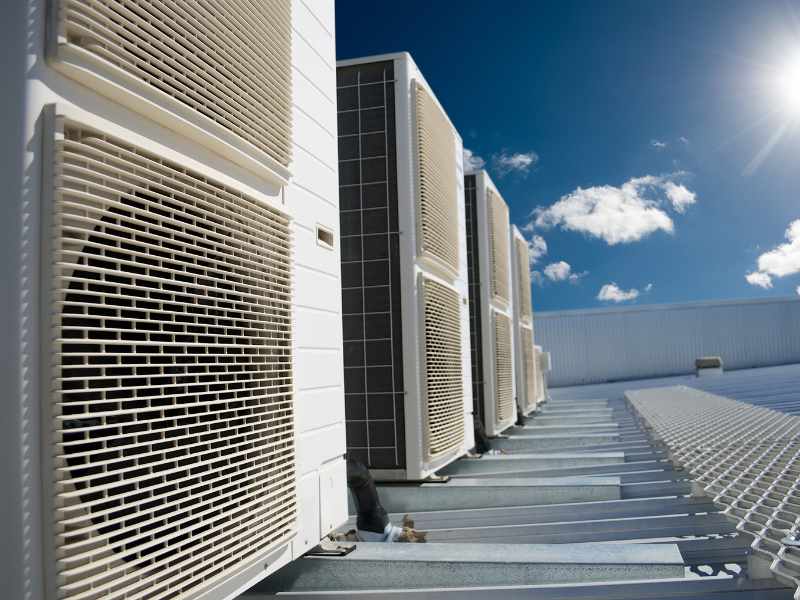
It’s time for a look at what’s new in the HVAC industry, where the spotlight shines brightly on Variable Refrigerant Flow, or VRF, technology. If you’ve ever wondered how modern buildings manage to maintain such precise and comfortable indoor climates across different zones, VRF systems are the secret behind this marvel. Designed for efficiency and flexibility, these systems are changing the game in heating and cooling solutions.
Whether it’s a commercial skyscraper, a cozy residential home, or a mixed-use complex, VRF technology offers tailored climate control that’s not only comfortable but also energy-efficient. Dive into the details with us as we explore how VRF systems work, their benefits, and why they’re becoming the go-to choice for savvy building owners and developers. From their ability to provide simultaneous heating and cooling to their impressive scalability, get ready to uncover the many advantages of embracing VRF technology in today’s dynamic architectural landscapes.
VRF, or Variable Refrigerant Flow, Explained
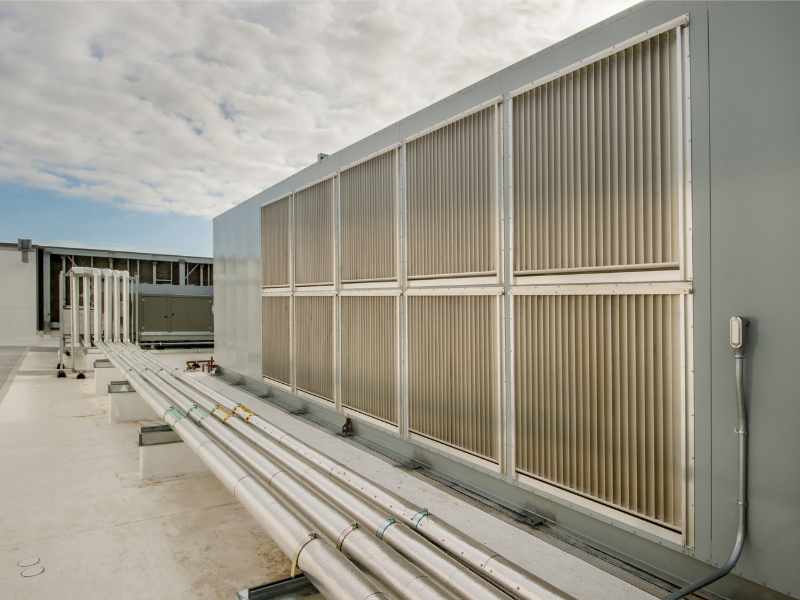
Variable Refrigerant Flow (VRF) technology represents a significant advancement in air conditioning and heating systems, designed to offer an efficient and flexible solution for controlling indoor climate. At its core, VRF systems are characterized by their ability to regulate the amount of refrigerant flowing to multiple indoor units, enabling precise temperature control in different zones or rooms within a building. This adaptability not only ensures comfort but also contributes to the system’s high energy efficiency, making it a popular choice for commercial, residential, and mixed-use buildings.
The essence of VRF technology lies in its sophisticated control systems, which allow for simultaneous heating and cooling in different areas, optimizing comfort levels and reducing energy consumption. By adjusting the refrigerant flow, VRF systems can respond to the specific demands of each space, whether it’s cooling a sunlit room or heating a shaded area, all within the same cycle. This capability distinguishes VRF from traditional centralized systems, which may struggle to accommodate diverse thermal loads with the same level of precision and efficiency.
Moreover, VRF systems are celebrated for their scalability and ease of installation. They can be tailored to suit the size and requirements of any building, making them an ideal choice for retrofit projects or new constructions. The modular design of VRF systems allows for a phased installation, minimizing disruption and enabling expansion as necessary.
This flexibility, combined with the potential for lower operational costs, underscores the growing preference for VRF technology in various sectors. In summary, Variable Refrigerant Flow technology offers a sophisticated, energy-efficient solution for managing indoor climates across different zones. Its precise control, adaptability, and scalability make it a superior choice for a wide range of applications, driving its popularity in modern heating, ventilation, and air conditioning (HVAC) solutions.
Utilizes Refrigerant for Both Cooling and Heating
Variable Refrigerant Flow (VRF) technology stands out by utilizing refrigerant as the primary medium for both cooling and heating. This innovative approach allows for a seamless transition between modes, ensuring optimal indoor comfort regardless of external temperatures. The system’s advanced control mechanisms regulate the flow of refrigerant to each connected indoor unit, tailoring the climate control to the specific needs of different zones or rooms.
This precise regulation not only maximizes comfort but also significantly enhances the system’s energy efficiency, positioning VRF as an environmentally friendly choice for modern climate control solutions.
Operates with One Outdoor Unit Connected to Multiple Indoor Units
A defining characteristic of Variable Refrigerant Flow technology is its unique configuration, which involves a single outdoor unit connected to multiple indoor units. This setup offers unparalleled flexibility and scalability in heating and cooling solutions, making it ideal for a wide range of applications, from residential to commercial and mixed-use buildings. Each indoor unit can be controlled independently, allowing for personalized temperature settings across different spaces without compromising the comfort of others.
The streamlined connection, facilitated through a network of refrigerant pipes, reduces the need for bulky ductwork, simplifying installation and optimizing space. This efficient design not only improves the system’s operational efficiency but also contributes to significant energy savings, underscoring the VRF system’s role as a versatile and sustainable HVAC option.
How Does VRF Work
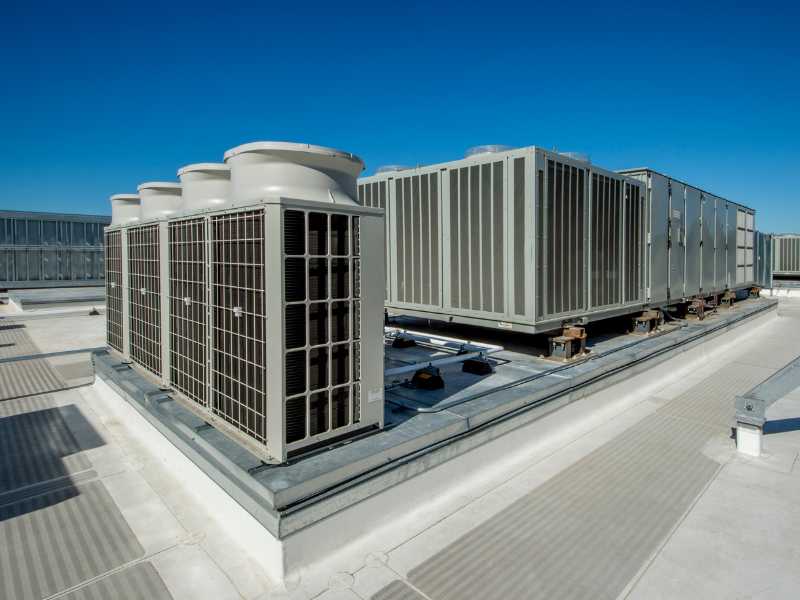
Variable Refrigerant Flow (VRF) systems operate by dynamically adjusting the flow of refrigerant to multiple indoor units, tailored to the specific cooling or heating demands of each zone within a building. This process is governed by a sophisticated control system that meticulously monitors each zone’s temperature, directing the refrigerant precisely where it’s needed most. The capability to precisely control the volume of refrigerant facilitates individualized temperature settings across different areas, ensuring optimal comfort while also maximizing HVAC energy efficiency.
The core components of a VRF system include an outdoor unit, which serves as the central hub, and several indoor units that can be individually regulated. This setup provides a highly flexible and efficient approach to climate control, meeting the diverse needs of both modern residential and commercial spaces. Through its innovative design and operation, VRF technology offers an advanced solution for achieving superior indoor climate conditions, highlighting its role as a versatile and sustainable choice in the HVAC industry.
Refrigerant Circulated by Varying the Flow Based on Demand
In Variable Refrigerant Flow (VRF) systems, refrigerant is circulated by adjusting its flow to meet the specific demand of each zone. This dynamic adaptation ensures that each area receives the exact amount of cooling or heating required, optimizing comfort and energy efficiency.
Capable of Precise Temperature Control in Individual Zones
VRF technology excels in delivering precise temperature control within individual zones. Each indoor unit operates independently, allowing for tailored climate settings that match the occupants’ preferences, enhancing comfort and satisfaction.
System Components Include Outdoor Units, Indoor Units, and Control Systems
The VRF system is comprised of three main components: the outdoor units, indoor units, and control systems. The outdoor unit acts as the system’s engine, the indoor units distribute the conditioned air, and the control systems manage the operation, ensuring seamless and efficient performance.
Benefits of VRF Systems
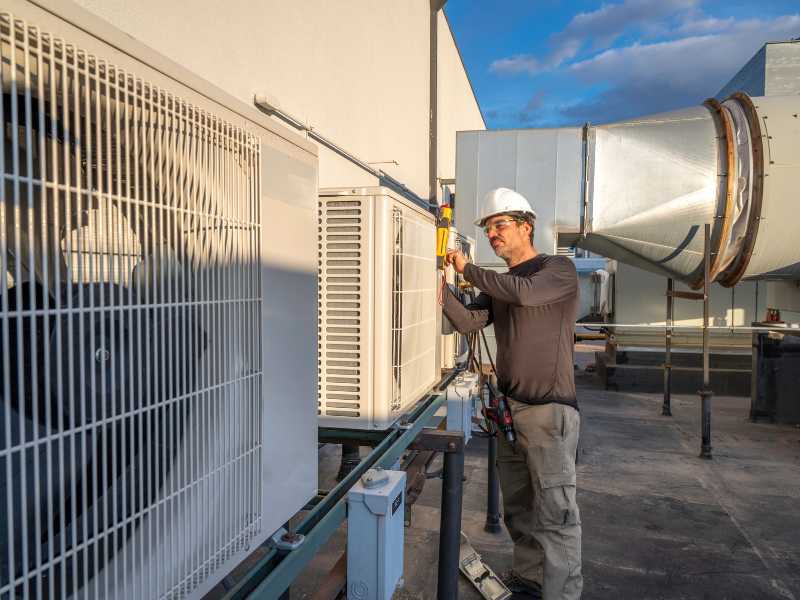
Variable Refrigerant Flow (VRF) systems offer a multitude of benefits, positioning them as a superior choice for both residential and commercial heating, ventilation, and air conditioning needs. One of the most significant advantages is their high energy efficiency. VRF technology features variable motor speeds that adjust based on the demand of each zone, leading to reduced energy consumption and, consequently, lower operational costs over time.
Another noteworthy benefit is the individual zone control provided by VRF systems. This allows for precise temperature management in different areas or rooms, enhancing occupant comfort by enabling users to customize climate settings to their personal preferences. Additionally, VRF systems are celebrated for their lower noise levels compared to traditional HVAC systems, offering a quieter and more pleasant indoor environment.
Together, these benefits highlight the value of VRF technology in delivering efficient, comfortable, and cost-effective climate control solutions across a wide range of applications.
High Energy Efficiency Through Variable Motor Speeds
Variable Refrigerant Flow (VRF) systems achieve high energy efficiency by utilizing variable motor speeds. This adaptation allows the system to precisely match the energy output with the cooling or heating demand, significantly reducing wasted energy.
Reduced Operational Costs Due to Less Energy Consumption
The efficiency of VRF systems leads to reduced operational costs. By consuming less energy, these systems lower utility bills, offering financial savings over the lifespan of the system.
Individual Zone Control Enhances Occupant Comfort
VRF technology provides individual zone control, allowing occupants to set temperatures according to their personal comfort levels. This capability ensures that each area can be customized for optimal comfort, without affecting other zones.
Lower Noise Levels Compared to Traditional Systems
Lower noise levels are another benefit of VRF systems. Thanks to their advanced design, these systems operate more quietly than traditional HVAC systems, contributing to a more peaceful and comfortable indoor environment.
Considerations for Installing VRF Systems
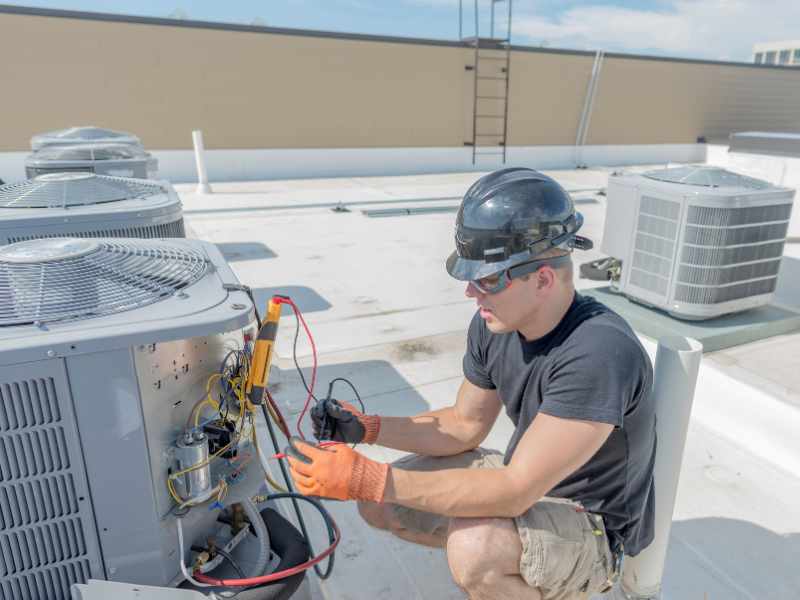
When contemplating the installation of Variable Refrigerant Flow (VRF) systems, several key considerations must be taken into account to ensure optimal performance and cost-effectiveness. First, higher upfront costs compared to conventional HVAC systems are a significant factor. The advanced technology and flexibility of VRF systems often result in a larger initial investment, though this can be offset by the potential for reduced operational costs in the long run.
Another important consideration is the complexity in design of VRF systems. They require a thorough understanding and experienced installers to ensure that the system is correctly sized and configured to meet the specific needs of the building. This complexity underscores the importance of engaging with professionals who have a proven track record with VRF technology.
Additionally, the potential for refrigerant leakage is a factor that necessitates proper handling and installation practices. While VRF systems are designed with safety and efficiency in mind, ensuring that the installation is carried out by knowledgeable technicians is crucial to minimize any risks associated with refrigerant handling. Taking these considerations into account is essential for anyone looking to invest in a VRF system, as they play a crucial role in the system’s long-term success and sustainability.
Higher Upfront Costs Than Conventional HVAC Systems
Variable Refrigerant Flow (VRF) systems typically involve higher upfront costs compared to traditional HVAC systems. This is attributed to their advanced technology and the flexibility they offer in custom heating and cooling solutions.
Complexity in Design Requires Experienced Installers
The complexity in design of VRF systems necessitates the involvement of experienced installers. Proper installation is crucial to ensure the system operates efficiently and meets the specific climate control needs of the building accurately.
Potential for Refrigerant Leakage Needs Proper Handling and Installation
There is a potential for refrigerant leakage in VRF systems, which requires proper handling and installation practices. It’s essential to ensure that the system is installed by knowledgeable technicians to minimize risks and maintain system integrity and safety.
Applications of VRF Systems
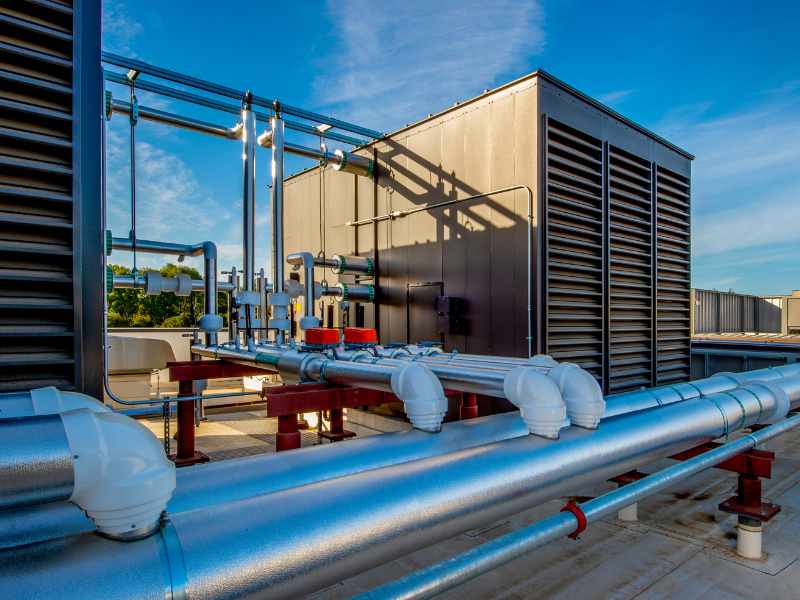
Variable Refrigerant Flow (VRF) systems are highly adaptable, making them suitable for a wide range of applications. They are ideal for multi-zone buildings such as hotels and offices, where individual room control is necessary for comfort and energy efficiency. VRF systems can also be effectively used in buildings with varying room sizes and usage, providing precise temperature control in each area without the need for extensive ductwork.
This makes them a perfect choice for retrofitting older buildings that lack existing ductwork, enhancing the building’s functionality while preserving its structural integrity. The versatility and efficiency of VRF systems cater to the diverse needs of modern buildings, offering a sustainable solution for complex heating and cooling challenges.
Ideal for Multi-Zone Buildings Like Hotels and Offices
Variable Refrigerant Flow (VRF) systems are ideal for multi-zone buildings, such as hotels and offices, where the need for individual room temperature control is essential for both comfort and energy efficiency.
Suitable for Buildings with Varying Room Sizes and Usage
VRF technology is highly suitable for buildings with varying room sizes and usage, adapting seamlessly to provide precise climate control in each distinct area, ensuring optimal conditions regardless of the external environment.
Retrofitting Older Buildings Without Existing Ductwork
VRF systems offer an excellent solution for retrofitting older buildings that do not have existing ductwork, enabling modern heating and cooling capabilities without compromising the building’s structural integrity or aesthetic.
Maintenance of VRF Systems
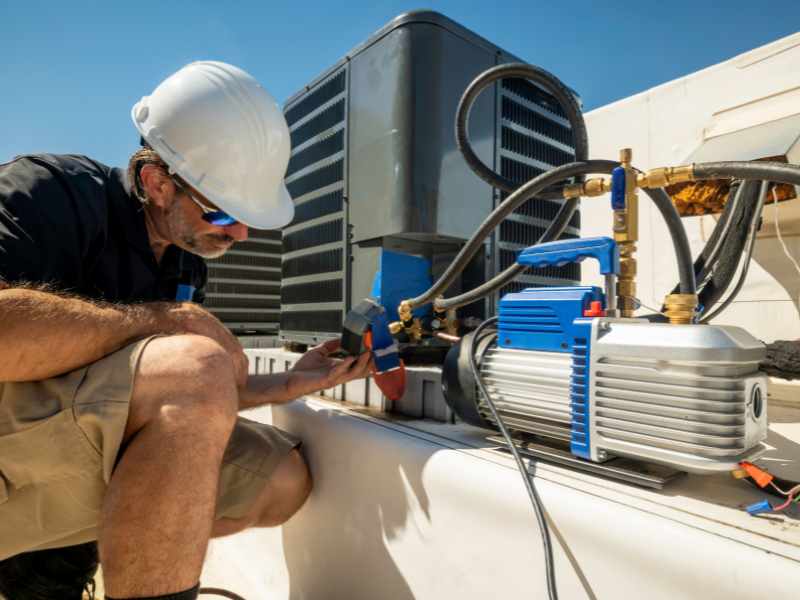
Maintaining Variable Refrigerant Flow (VRF) systems is crucial for ensuring their efficiency and longevity. Regular cleaning of filters and checking of refrigerant levels are fundamental practices that prevent operational issues and maintain air quality. Additionally, professional inspection of electrical components and connections is essential to identify and rectify potential faults before they escalate.
Seasonal checks also play a vital role in maintaining system efficiency, as they ensure that the system is prepared for the demands of different weather conditions. By adhering to a consistent maintenance schedule, VRF systems can continue to provide optimal heating and cooling performance, contributing to a comfortable and energy-efficient environment.
Regular Cleaning of Filters and Checking of Refrigerant Levels
Maintaining Variable Refrigerant Flow (VRF) systems involves regular cleaning of filters and checking of refrigerant levels. These critical maintenance tasks are essential for preventing operational issues and ensuring the system runs at peak efficiency.
Professional Inspection of Electrical Components and Connections
A professional inspection of electrical components and connections is crucial for the longevity and safety of VRF systems. This step helps to identify and rectify potential faults early, ensuring the system operates smoothly and efficiently.
Seasonal Checks to Ensure System Efficiency and Longevity
Seasonal checks are vital to maintaining the efficiency and longevity of VRF systems. These proactive measures prepare the system for the varying demands of different weather conditions, ensuring optimal performance throughout the year.
Future Trends in VRF Technology
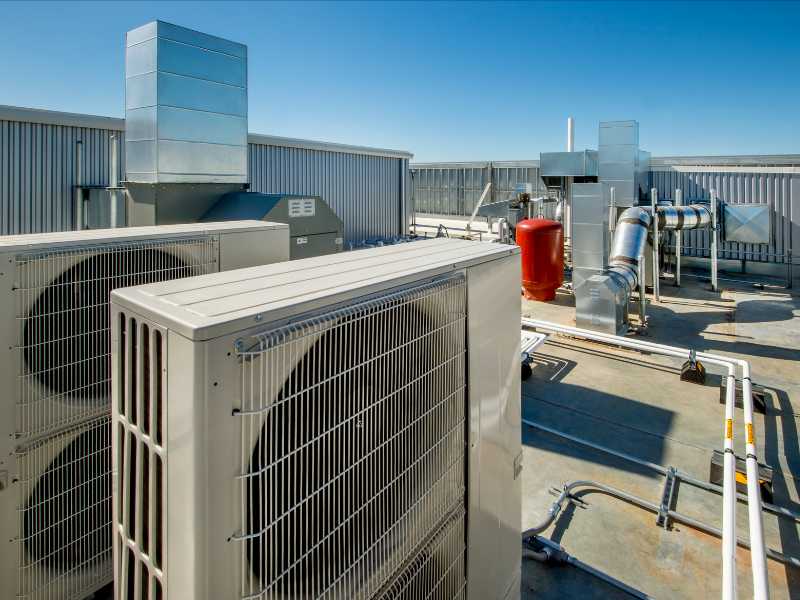
The future of Variable Refrigerant Flow (VRF) technology is poised for significant advancements, with a focus on integration with smart building technologies. This integration aims to enhance control and operational efficiency, allowing for more precise and automated climate management within buildings. Additionally, the development of more environmentally friendly refrigerants is a key trend, reflecting the growing emphasis on sustainability within the HVAC industry.
These new refrigerants are expected to reduce the environmental impact of VRF systems, aligning with global efforts to combat climate change. Furthermore, improvements in energy efficiency and operational flexibility are anticipated, driven by continuous innovation in VRF system design and functionality. These trends indicate a promising direction for VRF technology, offering improved performance, sustainability, and adaptability in meeting the evolving needs of modern buildings.
Integration with Smart Building Technologies for Enhanced Control
The future of Variable Refrigerant Flow (VRF) technology includes integration with smart building technologies, offering enhanced control over climate systems. This integration facilitates automated adjustments and real-time monitoring, significantly improving both efficiency and comfort.
Development of More Environmentally Friendly Refrigerants
A pivotal trend in VRF technology is the development of more environmentally friendly refrigerants. These advancements aim to minimize the ecological impact of climate control systems, aligning with global sustainability goals.
Improvements in Energy Efficiency and Operational Flexibility
Anticipated improvements in energy efficiency and operational flexibility are on the horizon for VRF technology. Ongoing innovations in system design and functionality promise to deliver more effective and adaptable climate control solutions, catering to a diverse array of building types and user needs.
In Summary
Variable Refrigerant Flow (VRF) technology represents a significant leap forward in HVAC systems, offering unparalleled efficiency, flexibility, and comfort for a wide range of applications. Whether you’re managing a multi-zone commercial building or seeking a more adaptable climate control solution for your home, VRF systems provide a sophisticated and energy-efficient approach to heating and cooling. By precisely regulating the flow of refrigerant to individual zones, VRF technology ensures that each area of your building is kept at the optimal temperature, reducing energy waste and lowering operational costs.
If you’re considering upgrading your residential or commercial HVAC system, it’s time to explore the benefits of VRF technology. Callidus Air is your trusted partner for all things HVAC. Our experienced team specializes in the installation and maintenance of VRF systems, ensuring that you get the most out of this innovative technology. Contact Callidus Air today to learn more about how we can enhance your indoor climate with state-of-the-art VRF solutions. Your comfort is our commitment—let us help you achieve it with the latest in HVAC technology.
